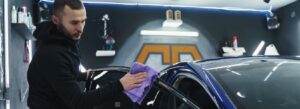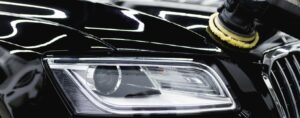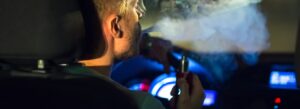If you’ve ever parked your car under a stubborn sprinkling of hard water, you know how those unsightly stains can dampen even the sunniest days. Those pesky mineral deposits not only mar your view but can also detract from your vehicle’s overall appearance. But fear not! In this blog post, we’re diving into effective and easy techniques to banish hard water stains from your car’s windows for good. Get ready to see clearly again as we equip you with simple DIY solutions and expert tips that will have your glass sparkling like new in no time! Say goodbye to smudges and hello to crystal-clear visions on the road ahead—let’s get started with Wet Detail!
Why Hard Water Stains Are A Problem For Car Windows
Your car’s windows are essential for visibility and safety, but hard water stains can quickly make them look unsightly. If you’ve ever noticed those pesky spots that refuse to budge, you know how frustrating it can be. Hard water stains occur when mineral deposits from water dry on the glass surface, leaving behind a cloudy residue. Not only do they obstruct your view, but these stubborn marks can also diminish your vehicle’s overall appearance.
Understanding how these stains form is key to keeping your windows crystal clear. The good news? With some knowledge and the right tools, you can effectively remove hard water stains and restore your car’s shine. Whether you’re preparing for a road trip or just want to keep up with regular maintenance, tackling those tough spots will enhance both aesthetics and safety. Let’s dive into everything you need to know about removing hard water stains from your car’s windows!

Understanding The Cause Of Hard Water Stains
Hard water stains occur when mineral deposits, primarily calcium and magnesium, are left behind on surfaces after water evaporates. These minerals can cling to your car’s windows, creating unsightly spots that obscure visibility.
Rainwater or tap water splashing onto your car is often the culprit. When this water dries quickly—especially in sunny conditions—the minerals remain stuck to the glass. Regular exposure to hard water can exacerbate these stains over time. Not only do they look bad, but they can also be challenging to remove without proper care.
Understanding what’s causing these stubborn marks helps you take steps toward prevention and effective cleaning methods. Knowing that it’s not just dirt or grime allows for better maintenance of your vehicle’s appearance.
Identifying Different Types Of Hard Water Stains On Car Windows
Hard water stains on car windows can vary in appearance, making it essential to identify them accurately. One common type is the cloudy residue that often forms when mineral deposits dry on the glass surface. This gives the window a hazy look, impairing visibility.
Another variant includes spots or streaks caused by water dripping off your vehicle. These are typically more pronounced and may have a crusty texture if left untreated for an extended period. You might also encounter etched marks. These occur when minerals react with the glass over time, creating permanent damage that standard cleaning won’t fix.
Recognizing these types can help tailor your cleaning approach effectively, ensuring you restore clarity without damaging your car’s windows further.
Materials Needed For Removing Hard Water Stains From Car Windows
To tackle hard water stains effectively, you’ll need a few essential materials. Start with white vinegar or lemon juice, both of which are natural acids that can break down mineral deposits. Next, grab some baking soda for its gentle abrasiveness. It works well to lift stains without scratching your windows. A spray bottle will help you apply the solution evenly for better coverage.
Microfiber towels are crucial; they trap dirt and grime while being soft enough not to scratch the glass surface. For extra scrubbing power, consider a non-abrasive sponge. Finally, don’t forget clean water for rinsing away any residue after scrubbing. With these materials in hand, you’re well-prepared to restore clarity to your car’s windows!
Step-By-Step Guide For Removing Hard Water Stains From Car Windows:
To tackle hard water stains on your car windows, start by preparing a cleaning solution. Mix equal parts of vinegar and water in a spray bottle for an effective natural remedy. Next, apply the solution generously to the affected areas. Allow it to sit for a few minutes to break down the mineral deposits.
Grab a microfiber towel or sponge for gentle scrubbing. Use circular motions to lift away those stubborn stains without scratching the glass. Once you’ve scrubbed thoroughly, rinse the window with clean water. This helps remove any residue from your cleaning solution.
Lastly, dry the surface using another clean microfiber towel for streak-free clarity. If some stains persist, don’t hesitate to repeat these steps until your windows shine bright again.
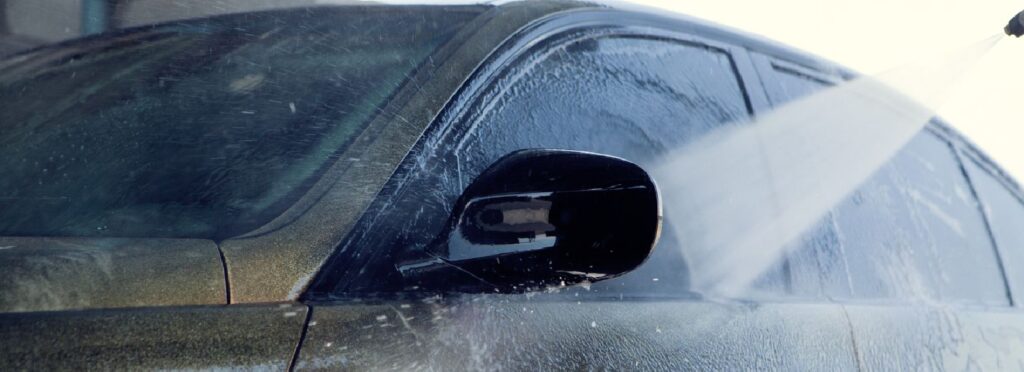
1. Preparing The Cleaning Solution
To tackle hard water stains effectively, start by preparing your cleaning solution. You have a few options here depending on what you prefer to work with. A popular choice is a mixture of equal parts white vinegar and distilled water. This natural solution cuts through mineral deposits without harsh chemicals. If you want something stronger, consider adding baking soda for extra scrubbing power. Pour the ingredients into a spray bottle for easy application.
Shake it gently to combine everything well before use. For those who like store-bought products, look for specialized glass cleaners that target hard water stains specifically. Always check the label to ensure it’s safe for car windows. Once your solution is ready, you’re one step closer to restoring clarity to those cloudy windows!
2. Applying The Solution To The Stained Areas
Once you’ve prepared your cleaning solution, it’s time to tackle those stubborn hard water stains. Begin by generously spraying the stained areas of your car’s windows. Make sure to cover every spot with a fine mist. If you’re working with larger stains, don’t hesitate to apply a bit more solution directly onto them. Let the cleaner sit for a minute or two; this allows it to break down mineral deposits effectively.
Be cautious not to let the solution dry on the glass as that could leave additional marks or residue. Keeping everything damp is key during this stage of cleaning, so be ready for the next step once you’re satisfied with coverage!
3. Using A Microfiber Towel Or Sponge To Scrub The Stains
Grab a clean microfiber towel or sponge to tackle those hard water stains. Microfiber is gentle yet effective, making it the perfect choice for delicate glass surfaces. Dampen your chosen cloth with the cleaning solution you prepared earlier. This will help lift the stains while minimizing any risk of scratching the glass.
Start scrubbing gently in circular motions over the stained areas. Don’t rush; allow the solution to work its magic as you apply just enough pressure to break down stubborn residue. For tougher spots, focus on one area at a time. If needed, switch to a fresh section of your towel or sponge to avoid reapplying dirt back onto the surface. Rinse frequently with clean water to ensure you’re not rubbing any leftover grime into your windows. Keep an eye on progress and adjust your scrubbing technique if necessary for optimal results.
4. Rinsing And Drying The Window
Once you’ve scrubbed away the hard water stains, it’s time to rinse. Use a clean spray bottle filled with fresh water or a gentle hose setting. This will help remove any remaining cleaning solution from the glass. Make sure to wipe in straight lines rather than circular motions. This technique prevents streaks and ensures an even finish.
After rinsing, grab your microfiber towel. It’s perfect for drying because it absorbs moisture without scratching the surface. Gently wipe down the window, paying attention to corners where droplets might linger. Inspect your work as you dry; sometimes stubborn spots need a little more attention. With everything dried off properly, enjoy your crystal-clear view through spotless windows!
5. Repeat If Necessary
After you’ve rinsed and dried the window, take a moment to assess the results. Sometimes, stubborn hard water stains require more than one treatment. If you still see traces of those pesky marks, don’t fret. Simply repeat the process you just completed. A second application can often do wonders in lifting away lingering residue.
Ensure that your cleaning solution remains fresh for optimal effectiveness. If it appears diluted or dirty, mix up a new batch before applying it again. Be gentle while scrubbing; harsh pressure could damage the glass or surrounding surfaces. Patience is key here—giving stains an extra round may be all that’s needed for spotless clarity.
Remember to rinse thoroughly after each attempt to avoid any buildup from leftover products on the glass surface. Each cycle brings you closer to crystal-clear windows free of those annoying hard water stains!
Tips For Preventing Future Hard Water Stains On Car Windows
To keep hard water stains at bay, regular maintenance is key. Washing your car frequently helps eliminate mineral deposits before they can bond to the glass. Consider using a high-quality wax or sealant on your windows. This creates a protective barrier that repels water and prevents stains from forming in the first place.
If you live in an area with hard water, be mindful of where you park. Avoiding spots near sprinklers or areas prone to runoff can significantly reduce exposure to minerals. After washing your car, dry the windows promptly with a microfiber towel. This simple step minimizes water spots by preventing droplets from drying on the surface.
Lastly, invest in window treatments like hydrophobic sprays specifically designed for auto glass. These products make it easier for rain to bead off rather than leave behind unsightly marks.
Other DIY Methods For Removing Hard Water Stains From Car Windows
If you’re looking for alternative DIY methods to tackle hard water stains on your car windows, you have a few interesting options. Vinegar is one of the most popular choices. It’s acidic and can break down mineral deposits effectively. Mix equal parts vinegar and water in a spray bottle, apply it directly to the stained areas, and let it sit for a few minutes before scrubbing gently with a microfiber cloth.
Another option is using baking soda. Create a paste by mixing baking soda with water until you get a thick consistency. Apply this paste to the stained spots, then scrub lightly with a soft sponge or cloth. For those who prefer something less conventional, try lemon juice combined with cream of tartar. This natural solution not only smells great but also helps lift those stubborn stains without harsh chemicals.
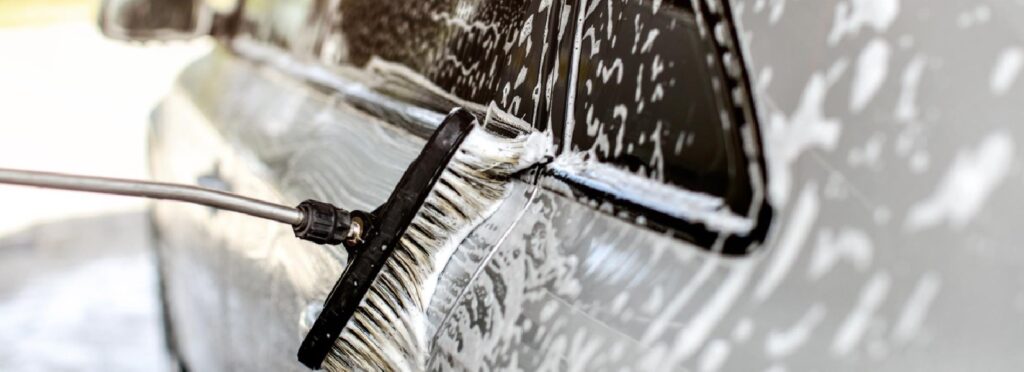
Benefits of Complete Detailing in Garland, TX
Removing hard water stains from your car’s windows can seem daunting, but the benefits of a clear and clean view are well worth the effort. Not only do spotless windows enhance your vehicle’s appearance, but they also improve visibility while driving, ensuring safer journeys.
By tackling these stubborn stains, you help maintain the integrity of your glass surfaces. This proactive approach may even extend the lifespan of your car’s windows by preventing etching or damage that could arise from left-behind mineral deposits.
Additionally, taking care of hard water stains saves you money in potential professional cleaning fees or costly replacements down the line. Regular maintenance keeps your vehicle looking its best and adds to its value should you decide to sell it in the future. Implementing a few preventive measures will keep those pesky stains at bay. With just a little time and effort invested into removing hard water stains now, you’ll enjoy clearer views on all your adventures ahead! If you do not have time to DIY, call Wet Detail for complete detailing in Garland, TX.

